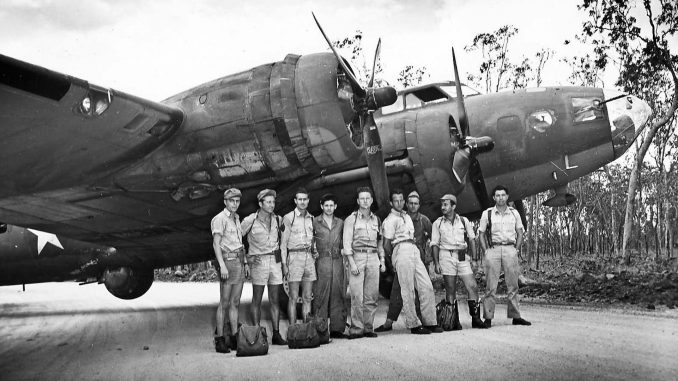
The 19th Bomb Group had withdrawn to Australia following the disastrous early days of the war in the Philippines, and there it began to regroup. American commanders were keen to get the vaunted B-17s – just 14 of which had managed to escape the Philippines – back into action to stem the tide of the Japanese advance. With the Japanese poised to move further southern towards the Netherlands East Indies it seemed that the best place to send the heavy bombers was the island of Java, the most important of the Indies and the location of most of the major military facilities as well as the capital, Batavia. The first 10 of the B-17s arrived at Singosari airfield, in eastern Java, on the first day of 1942 but it would take several more days before they were ready to launch attacks. The facilities at Singosari were primitive, but adequate for the operation of four-engine bombers. However, due to the vast distances involved – Singosari lay 1,400 miles from the Philippines and almost 1,000 miles from Singapore – the 19th would be forced to use staging airfields that were less well prepared.
Meanwhile additional reinforcements were arriving from the US, via Australia. These included the first aircraft of the 7th Bomb Group to arrive following their baptism of fire over Pearl Harbor the previous month. The 7th was equipped with both B-17s and LB-30s, export models of the B-24 Liberator that were diverted from shipments intended for the RAF. Several provisional fighter squadrons were also forming in Australia, in order to get the deliveries of P-40s that had been intended for the Philippines into combat. In similar vein the 27th Bomb Group was equipping itself with A-24 Banshees (Army versions of the SBD Dauntless) that had been diverted to Australia after the Japanese invasion of Luzon. Plans were being laid for an additional 160 heavy bombers to be sent to Australia, as well as a further 100 P-40s.
Flying Fortresses to the Fore
By the 4th of January nine B-17s of V Bomber Command had assembled at Samarinda in Dutch Borneo, a forward airbase that put the bombers within range of the southern Philippines. The first mission was to stage a bombing raid on a concentration of Japanese shipping in the Davao Gulf. Bad weather had postponed the mission repeatedly, as had problems loading and fitting the Dutch-supplied bombs and fuses that were supplied to the B-17s. Eight of the Boeings set out on the morning of the 4th, flying 730 miles to Davao. There was no aerial opposition and, from an altitude of 30,000ft, the Americans claimed hits which sank a destroyer, and damaging hits on a ‘battleship’. This latter vessel was the heavy cruiser Myōkō, which was hit by a single bomb on her no. 2 turret which forced her to return to Japan for repairs. All of the B-17s returned to first to Samarinda and then back home to Singosari intact. However, the mission had exhausted Samarinda’s entire supply of 100-octane fuel, and so could not be used again until more stocks were shipped in. Four days later another raid on Davao, this time staged through Kendari, was less successful as four of the nine B-17s had to turn back due to foul weather. This also contrived to spoil the efforts of the remaining aircraft, which dumped their bombs into the sea without hitting anything.
These attacks did nothing to slow down the Japanese, who landed at Tarakan in the north of Borneo and Manado on northern Celebes on the 11th. Seven B-17s were immediately sent to attack the transports off Tarakan, but again weather forced most of the bombers to abort and those that made it to the target failed to do any appreciable damage to the enemy. On the 14th seven B-17s flew to Palembang prior to attacking Sungei Patani airfield in Thailand. Yet again the weather was poor and two B-17s turned back, but the remainder made several unopposed runs on the target with good results. In total the bombers had flown a 3,000-mile round trip to attack a single airfield, but only one bomber was lost, that due to damage on landing at Singosari.
Reinforcements had by this time begun to arrive from US, as half a dozen LB-30s of the 7th Bomb Group flew into Singosari following a round-the-world trip via Africa and the Middle East. Three of the new arrivals set out for Manado Bay, with a stopover at Kendari. They were joined by a pair of B-17s which concentrated on shipping in the bay whilst the LB-30s attacked nearby Langoan airfield. Zeros of the 3rd Kokutai attacked the Liberators just after they released their bombs, causing significant damage to two of the Liberators which were forced to crash land, whilst a B-17 was destroyed on the ground by a surprise attack by strafing Zeros at Kendari.
With reconnaissance showing a build-up of Japanese shipping at Jolo in the southern Philippines, the 19th Bomb Group was ordered to carry out a shuttle-bombing raid. The planes would hit the target and then carry on to Mindanao, picking up stranded airmen from Del Monte. Then they would return to Java. The weather on the 19th of January was appalling, so only six of the nine B-17s assigned made it through to Del Monte. Over Jolo, they claimed to have destroyed a tanker, but Japanese records do not confirm this sinking. 23 officers and men were evacuated from Del Monte to Java.
Into the Makassar Strait
By this time the Japanese advance through the Makassar Strait was gathering momentum, with new landings targeting the major ports in the strait – particularly Balikpapan, which was captured on the 24th. Dutch bombers responded by sinking one of the transports, whilst American destroyers carried out a raid on Balikpapan which sank four more. Several B-17 raids were also despatched to hit Japanese shipping, but the big bombers were showing the first hints of their inability to hit ships underway in the open ocean. Fortunately, the Japanese convoy had only limited air cover in the form of F1M Type 0 floatplanes, which were unable to effectively challenge the high-flying Fortresses. Therefore, plans to push further south to Java were pushed back to allow more time for the capture of suitable airfields on Borneo and Celebes – this slowing of the timetable representing the Allies most notable success of the Pacific War so far.
The forward airbase at Kendari was captured by the Japanese on the 26th of January and the bombers of the 21st Air Flotilla moved forward. These were now within easy range of Java and a direct threat to the bases of the Far East Air Force, as well as Allied shipping in the region. The Allies also took advantage of the brief lull to reinforce Java. In late January additional ground crews arrived on the island from Australia, along with a few new or reconditioned bombers and a fresh supply of American-produced 100-octane fuel – much better for the B-17s than the more aromatic Dutch fuels.
B-17 raids continued. Five bombers were sent via Palembang to attack Kuala Lumpur airfield, another 3,000-mile round trip that produced dubious results – especially given the imminent fall of Singapore. Five more bombers were sent out after the Japanese shipping still massed at Balikpapan, but these ran into serious opposition in the form of Tainan Kokutai Zeros. The bomber carrying Major Stanley Robinson, commander of the 7th Bomb Group contingent on Java, was badly damaged during the interception. Descending for a water landing, the B-17 went out of control at low altitude and crashed, killing all aboard. More missions over the next few days were only slightly successful due to continually bad weather, but a transport was claimed sunk on the 2nd of February.
The Japanese Strike Back
Worse was to follow as the Japanese located the American airfields and sent out the 21st Air Flotilla to neutralise them. First low-flying Zeros raced in to give Singosari a thorough strafing, and then 20 bombers followed to deliver a load of high-explosives. The result was that four of the precious Flying Fortresses were destroyed and a fifth, out on a test flight following repairs, was shot down by the Zeros. The new commander of the 7th Bomb Group, Major Straubel, was also lost when the B-18 that he was flying back from a conference was shot down by Zeros. It was a black day for V Bomber Command. Air raids on Java now became an almost daily event, forcing the B-17s to remain airborne during the day to prevent them from being destroyed on the ground. This inevitably put more strain on the already overworked bombers.
An attempt was made to give the Japanese a taste of their own medicine when nine B-17s set out to attack Kendari on the 8th of February. On their way to the target the bombers spotted a group of fighters that appeared to have American markings. These aircraft flew alongside the B-17s at a respectful distance, before pulling ahead and turning in on an attack – they were in fact Zeros from the 3rd Kokutai. The Japanese had paid attention to the vulnerability of the B-17 to frontal attacks, and were using a new tactic designed to exploit this. The first Zero hit the bomber at the rear of the formation in the auxiliary bomb-bay fuel tank, and the aircraft quickly became a mass of flames as it spiralled towards the sea. The second fighter attacked the lead bomber with identical results, before the remainder jettisoned the vulnerable extra tanks and veered off to hide in a nearby cloud. Further attacks damaged three more B-17s, whose gunners claimed 5 Zeros shot down in return. Abandoning the mission, the survivors fled back to Java. Ground crews hurriedly came up with plans to mount more powerful .50cal machine guns in the nose of all bombers to prevent a repeat of the disaster.
Bad weather over the next few weeks severely hampered American efforts to attack the approaching Japanese. The port of Makassar had been taken, and with Japanese fighters controlling the skies it was safer to send the B-17s to attack this target at night – but results were undetermined. Over the next few days, V Bomber Command B-17s made several attempts to find and attack a convoy reported to be heading for Sumatra. Although some ships were sighted and attacked, the damage was not enough to prevent the Japanese taking control of the island. The fall of Sumatra closed the air route for bombers flying in from Africa, and left Java increasingly vulnerable. The head of the Allied ABDA Command, General Wavell, realised that Java was indefensible and recommended that it be abandoned.
Java Falls
What was worse, intelligence now pointed to an impending landing on Java itself. A Japanese convoy had evaded several attacks by night flying B-17s and landed troops on Bali, to the east of Java. The airfield at Denpasar was quickly captured and Zeros from the Tainan Kokutai moved in, putting them within easy range of every Allied airfield. On the same day Darwin in Australia was bombed, meaning that the ferry route via the Pacific was no longer viable – no more reinforcements of heavy bombers could reasonably expect to make it to Java. Aircraft were repeatedly sent out on the short hop to Bali to attack Japanese shipping, but the ever-present Zeros made life difficult for the B-17s and little damage was done. Meanwhile, the marauding Zeros whittled down the bomber force, burning out seven bombers on the ground in the days after the Bali landing.
ABDA was dissolved on the 23rd of February. Arrangements were being made for the Far East Air Force to pull out, with a ship standing by to take on board the ground crews and staff. The flying echelon, meanwhile, would do what it could to stem the advance. The Japanese placed three separate naval forces to the east, west and south of Java, hoping to catch Allied shipping as it escaped. The remaining ships of the ABDA naval force set out to find the approaching Japanese invasion flotilla but were heavily defeated in the Battle of the Java Sea on the 27th/28th of February. B-17s were sent out individually and in small groups to attack the transports approaching Java, but had no better luck than they had when attacking the Sumatra force. Little, if any, damage was done and the Japanese landed on Java on the 1st of March. After flying a few more futile raids, the remaining bombers loaded as many ground crew as they could, and fled to Australia, with the last aircraft leaving just after midnight on the 2nd. After a few more days of fighting Java fell to the Japanese on the 12th of March.

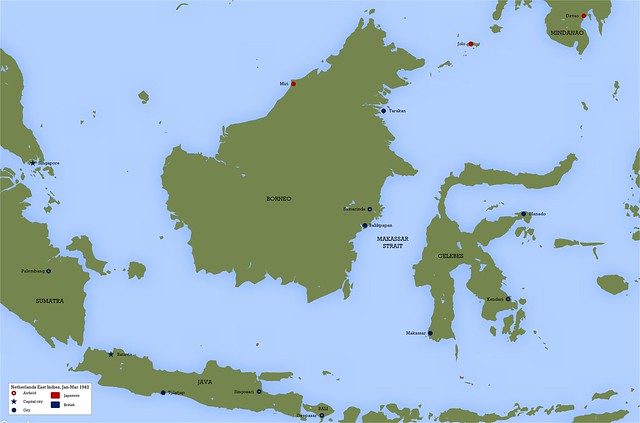
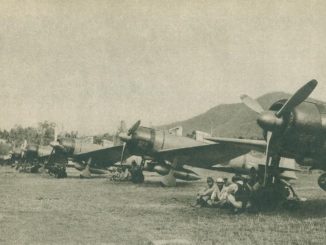
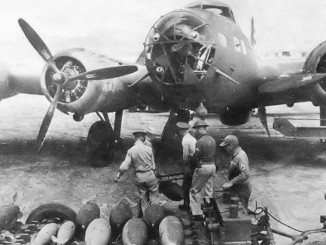
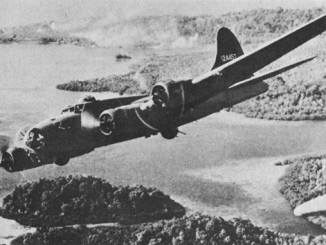
Leave a Reply